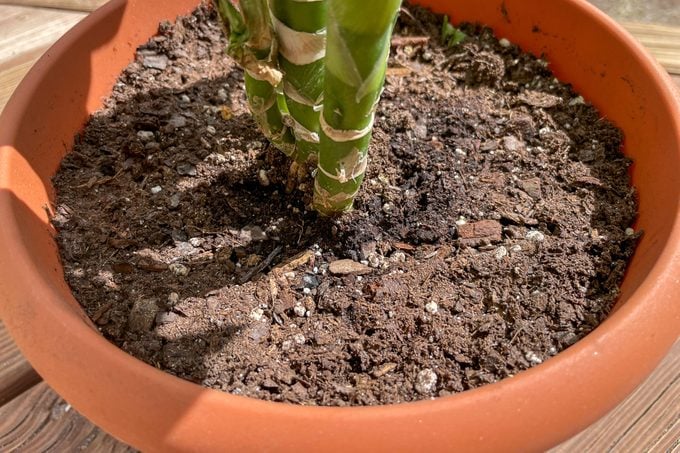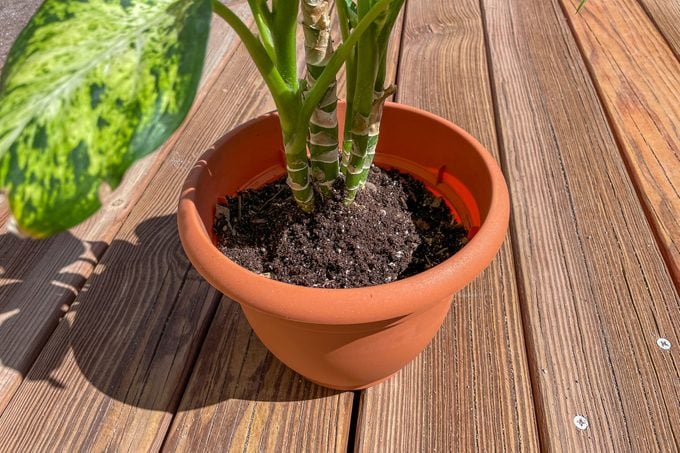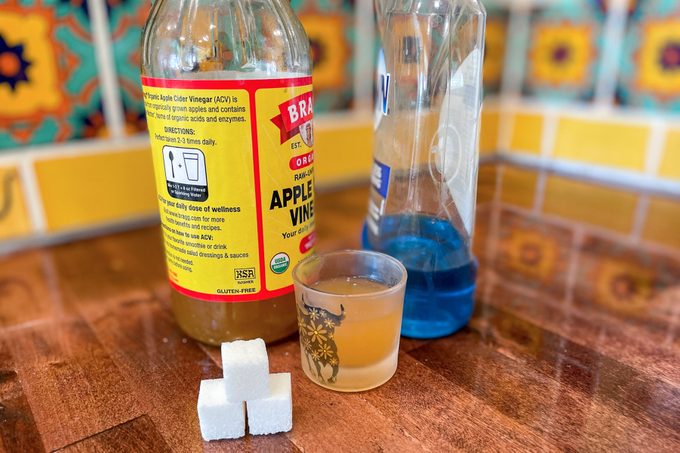These annoying hitchhikers commonly find their way from nursery greenhouses into your home. Here's what to know to get rid of houseplant gnats.

How to Get Rid of Houseplant Gnats

The first time I encountered houseplant gnats was after I repotted a night-blooming jasmine. Because I had grown the plant from seed, I was particularly attached to it. But there were so many gnats around it, I could barely stand to get close.
Time to figure out how to get rid of plant gnats!
“Fungus gnats are a nuisance to people, landing in your tea and coffee and flying around in your face,” says The Houseplant Guru, Lisa Eldred Steinkopf. But there’s no need to panic. “They probably won’t kill a plant; though as numbers increase, they can weaken it as they feed on the roots and stems.”
My solution was to repot my jasmine using a fresh bag of potting mix. But I later learned there are a number of easier ways. If you’ve got a swarm in your home, here’s how to get rid of plant gnats.
On This Page
What Are Houseplant Gnats?
Houseplant gnats, aka fungus gnats, are various species of small flying insects (and their larvae) that live in potted plants.
“They are tiny, but incredibly annoying for their size!” says Justin Hancock, a horticulturist at Costa Farms. “And because they have a relatively quick lifecycle, particularly in warm temperatures, it doesn’t take long for a small population to become noticeable.”
Where Do Gnats Come From?
Fungus gnat larvae live in soil, which means their eggs and larvae can enter your home when you buy new plants, repot them with new soil or bring potted plants inside that have been living outdoors. The gnats then emerge from the soil as flying adults.
“Unfortunately, it’s pretty common to bring them in from your local garden center,” says Hancock. “Any tear in the bag leaves an opening for gnats to lay eggs.”
What Are Gnats Attracted To?
Fungus gnats are attracted to moist potting soil, which is rich in organic matter like peat moss. Adults lay eggs in the mix, and when the larvae hatch they feed on naturally occurring fungi and other organic matter.
“The mix provides an ideal habitat for raising their young,” says Hancock. “Unfortunately the larvae may also feed on plant roots if the roots are weak or the potting mix doesn’t contain enough fungi.”
Do Gnats Bite?
No. Even though they seem to enjoy flying right around your face, adult gnats can’t bite you or the plant.
How Long Do Gnats Live?
Adults Iive for about a week, during which time they can lay a few hundred eggs. Those hatch into larvae in four to six days. The larvae then feed in the soil for another week or so, before becoming adults and starting the process all over again. Since they complete their lifecycles in less than three weeks, their numbers can multiply pretty quickly.
How to Tell You Have Gnats in Your Houseplants
You’ll see them. They look a lot like fruit flies or tiny mosquitoes. If you dig around in the top couple of inches of soil, you’ll probably also notice the larvae, which look like tiny white worms.
How to Prevent Houseplant Gnats

Since they thrive in moisture, let your plant soil dry out between waterings. Also, be vigilant not to bring them home. Before buying potting mix or plants, visually look for flying adults and use a magnifying glass to examine soil for larvae and eggs.
“If you see them flying around the garden center when you are buying your plant, you can be certain you will have them at home,” says Steinkopf. “Leave those plants there, and don’t buy plants that are waterlogged, which you shouldn’t buy anyway.”
How to Get Rid of Houseplant Gnats
There are a number of simple ways to get rid of plant gnats.
Water Less Frequently
Fungus gnat larvae live in the top few inches of potting mix, and they need that to be moist. So either water plants less often or water from the bottom, to make the top layer of soil uninhabitable.
“This works well for many plants, but may not be as appropriate for thirsty varieties like ferns, peace lily, Schismatoglottis, and Fittonia,” says Hancock.
Replace Soil

If you only have a few flies, you can probably get away with replacing the top few inches of your potting mix with gnat-free soil, says Steinkopf.
Hancock also suggests trying a soilless material, like LECA (lightweight expanded clay aggregate) or creating a barrier on top of the soil. “I’ve had great success adding an inch or so of sand to the top of the potting mix; it dries out too fast to sustain fungus gnat eggs,” he says.
Set Out Sticky Traps

Yellow or blue cards coated in adhesive attract gnats, which then stick to the trap. They are most effective on small populations, or to help gauge how large yours is and whether it’s increasing or decreasing.
“Similarly, add a mix of apple cider vinegar, sugar, and a couple of drops of dish soap to a ramekin,” says Hancock. “Some of the gnats will fly into the mixture, but the dish soap creates a layer on the surface that prevents them from flying out.”
Apply Natural Insecticides
You can add a few products to your plant watering routine to help control gnats. Always read and abide by warnings and directions on the label.
- Mosquito-control products containing the bacterium Bacillus thuringiensis israelensis (aka Bti) kill gnat larvae. Steinkopf recommends the product Mosquito Bits.
- Nearly microscopic organisms called S. feltiae nematodes eat gnat larvae.
- Rove beetles also eat gnat larvae. “But for plant parents who don’t like the idea of any insects in their plants—even if they’re the good guys—then this isn’t the best solution for them,” says Hancock.
FAQ
Are fungus gnats harmful to plants?
Rarely. But if your potting mix doesn’t have enough fungi, the larvae might feed on plant roots, which can eventually weaken plants if their numbers are large enough.
What’s the easiest way to prevent or get rid of houseplant gnats?
Keep your potting mix a bit drier. “Always water your plants thoroughly, but then allow them to dry down before watering again,” says Steinkopf.
About the Experts
Justin Hancock is a horticulturist at Costa Farms, the world’s largest houseplant grower. He has more than 25 years of experience in the horticulture industry as a garden editor and retail garden center operator.
Lisa Eldred Steinkopf founded The Houseplant Guru, a website devoted to teaching people how to care for their plants. She’s also a writer, lecturer and author of Houseplants: The Complete Guide; Grow in The Dark; Creative Houseplant Projects; and Bloom.



















